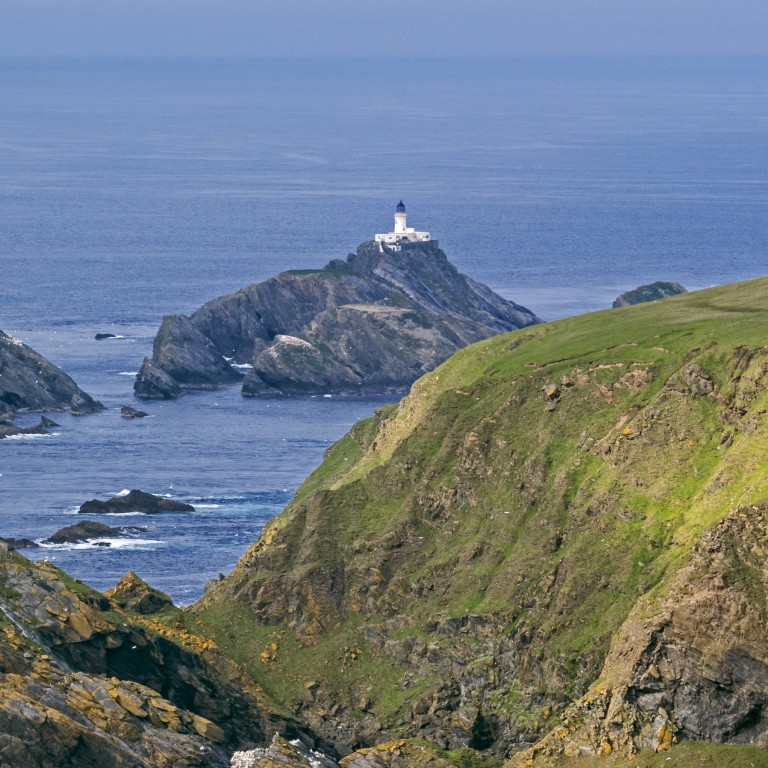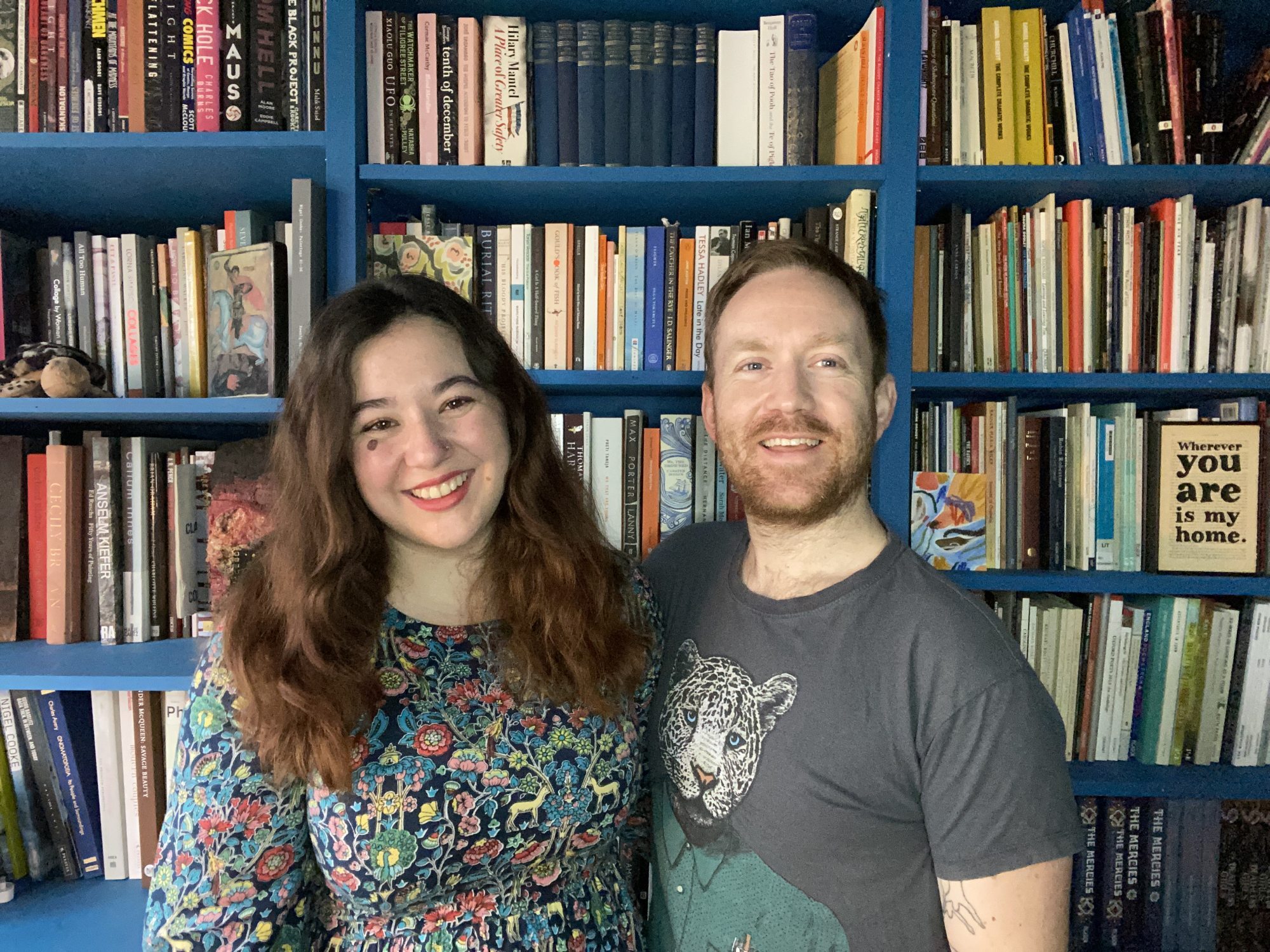
Review | Children’s book Julia and the Shark a harrowing, moving, inspiring story of a summer holiday and a lost innocence
- Kiran Millwood Hargrave’s latest work of children’s fiction sees a 10-year-old and her parents take a summer holiday in a lighthouse on a Scottish island
- At first all seems idyllic as Julia learns about island life, and about sharks from her brilliant, yet fragile mother – then dark replaces light
Julia and the Shark, Kiran Millwood Hargrave, pub. Orion Children’s Books
When Kiran Millwood Hargrave appears on November 14 at the Hong Kong International Literary Festival, the audience could be forgiven for wondering which writer will turn up.
Will it be the bestselling author of The Mercies, her prize-winning debut 2020 novel for adults? Or Kiran Millwood Hargrave, the prize-winning poet? Or Kiran Millwood Hargrave, the playwright? Or Kiran Millwood Hargrave, the chart-topping author of children’s books such as The Girl of Ink & Stars (2016) and The Deathless Girls (2019).
The obvious answer is all of the above. A more literal one is Kiran Millwood Hargrave, author of Julia and the Shark. The book returns Hargrave to the familiar terrain of children’s fiction after a successful dive into “grown-up” waters. In other ways, it sees her breaking new ground and collaborating for the first time with her husband, Tom de Freston, a multimedia artist making his debut in book illustration.

The bare bones of the plot are summarised early on. “This is the story of the summer I lost my mum, and found a shark older than trees. Don’t worry though, that doesn’t spoil the ending.”
These words are spoken by our narrator Julia Farrier, who as her yarn begins is 10 years and 203 days old. Unlike her numerically inclined father, Dan, she is a word person. Julia expresses her dislike of her father’s work with “binary code” by looking “binary” up in the dictionary: “Two things,” she writes dismissively of the definition. “Right and wrong. True and false. Where’s the space in that?”
The books helping kids cope with Covid-19 and natural disasters
These polarities seem to be united in Julia’s mother, Dr Maura Farrier. Maura is also a word person, but unlike her daughter she doesn’t mind numbers either: “She’s a scientist, which means you need to like both. Numbers help you keep track of things, but only words can help you explain them.”
This seems to locate Julia’s mother as a counterbalance to both her husband and child, but in fact she will prove the most fragile of the three. First though, the Farriers set off to spend the summer on Unst, one of the islands in the Shetland archipelago, in Scotland. Julia’s father has been hired to transform the lighthouse from old school “gas and sparks” to a fully automated operation.
It is Julia’s mother who suggests the whole family goes along for the ride. Although she enjoys her research into pollution-eating algae in the seas around Cornwall, her true love is “the biggest things that lived in the coldest seas”. By this Maura means whales (“Blue whales, sperm whales, narwhals and belugas”), and above all, her “favourite animal in all the world […] A Greenland shark”.

The voyage begins with the promise of genuine excitement. “I could see why so many stories were set in lighthouses,” Julia writes on arrival. “It’s a good place for adventures even before you go inside.” Spirits are high, although faint warning bells sound when she describes the interior as “gloomy and cramped”.
Julia makes friends with two islanders, Neeta and Kin (short for Kinshuk). She learns all manner of interesting facts about their new world: that Greenland sharks can live for 400 years, something worked out by dating crystals in their eyes, and that their longevity might help people suffering from dementia.
But slowly, the high spirits spin out of control. Kin is being bullied at school. Tensions rise between Julia’s parents, largely about money. First Maura buys an expensive camera; later she splashes out on an even more expensive boat.
The thought dawns, on Julia and the reader alike, that Maura’s creative passion is part of a broader and more threatening arc of the bipolar depressive. Nothing sums up Maura’s brilliance and her heartbreaking pathos better than her decision to name the boat Julia and the Shark.
The power of this title owes much to the assumed, often mistaken, fears inspired by sharks. Julia learns there are far more terrifying things far closer to home – like the number 93875400, which is written on the hospital bracelet her mother wears after her breakdown. “93875400 doesn’t tell you anything about Mum. Only words can do that. And even they fail me sometimes.”

By naming these fears, Julia learns they can be faced and overcome, if not defeated entirely. These dark-light dynamics are accented by short poems and de Freston’s wonderful slate grey illustrations, which combine wonder (birds flocking in shark form), poignant dreams (Julia trying to catch stars in a fishing net) and despair (the lonely young girl, head buried in hands).
Julia and the Shark is a marvel, harrowing at times, moving at others, but an inspiration all the while.
Kiran Millwood Hargrave and Tom de Freston appear in a hybrid Hong Kong International Literary Festival event today, 5-6pm. Visit festival.org.hk for details.

